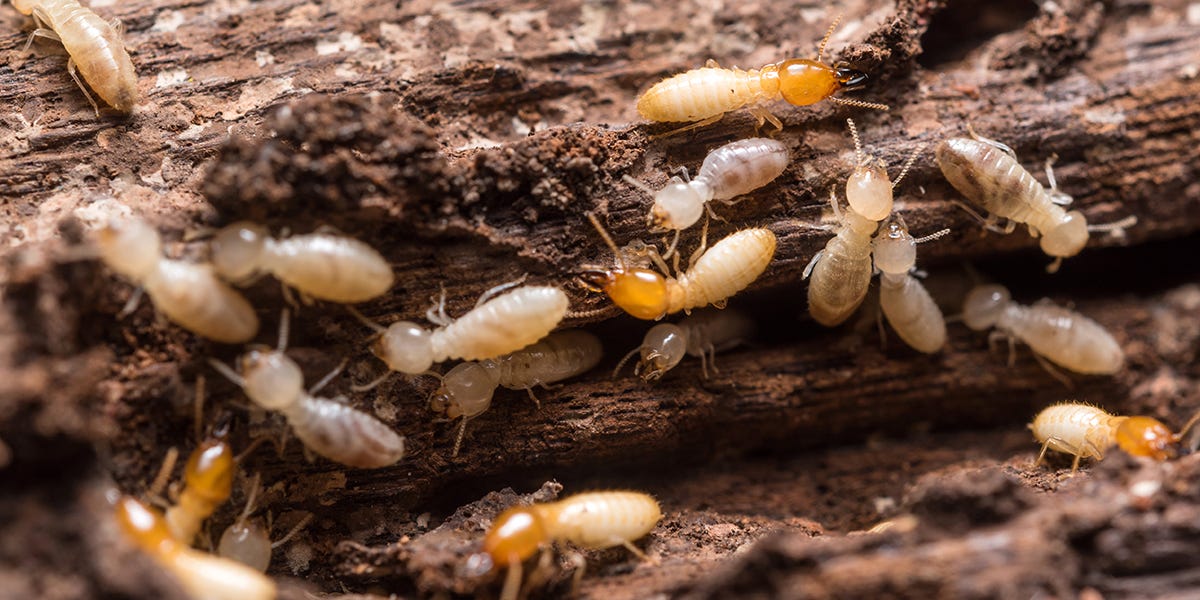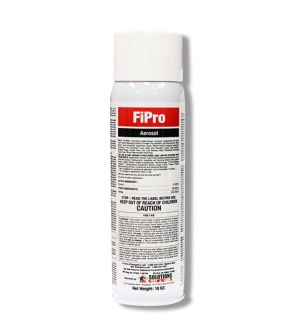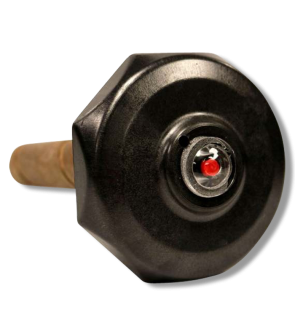Termite Myths
Most Effective Products
Termite Myths
This page is a general article that discusses common myths associated with termites. Here you can find a detailed guide for controlling termites as well as learn more about this persistent pest infesting your home and yard. This article will go over common strategies from the termite control guide and information that discusses facts about termites.
A termite infestation is one of the most daunting tasks that homeowners come across in their homes and yards. For as long as the weather is warm and there has been consistent moisture in wood surfaces then termites will invade. Due to current termite infestations or through casual conversations leads homeowners to search more about this wood-infesting pests.
However, things you do not expect with termite infestations is the amount of misinformation surrounding them. Separating the truth between myth and fact can help you to quickly eliminate populations and provide your property with the appropriate termite control to minimize damages.
As a homeowner, you understand that not everything in life can be prevented, but through quarterly inspection you can quickly witness termite activity that may result in the destruction of your home or yard. By reading our DIY guide you can debunk common misconceptions about termites, which can completely eliminate populations.
Myth: Termites Feast Only on Wood

Most homeowners know that termites eat wood, but what they do not know is that this pests ingests other things that produce cellulose. For example, other things that contain cellulose is sheet rock, wall paper, plants, trees, fabrics, cardboard boxes, cotton clothing, paper in books, shelves, cabinets, carpet, other termite droppings, and upholstered furniture.
Fact: Termites are dependent on cellulose material due to the organisms within their stomachs. These organisms release the nutrient back into termites body through the form of sugar. Some termite species particularly invade moist or decaying wood surfaces since it can be easily digested.
Myth: Bricks and Concrete Slabs are Termite Proof

While the outside surface of your home or garage may have a brick or concrete surface or sit on a concrete slab this does not mean it is termite proof. The vast majority of homes or garages have wooden frame interiors, therefore, termites are not a ruled-out pest. Termites that cannot chew through these hard surfaces will travel through any cracks, voids, or holes to reach the interior wooden structure.
Fact: Depending on the species of termites, they may travel through mudtubes, galleries in wood, or through cracks along the outside of your homes wall or in the concrete slab underneath your home. We recommend using FiPro Foaming Aerosol to treat the cracks in the exterior and interior of your homes wall, window and door frames, baseboards, parts of concrete slab exposed, exposed termite galleries, and around bath and shower voids.
Spray along the length of cracks, crevices, and voids while keeping the injection tube inside as you move. Hold the trigger for 5 to 10 seconds to release the product, and hold the injection tube for at least 5 seconds to allow the product to expand and foam.
If you are still concerened about potential or past infestations, then you can insert a termite monitoring station like Red Eye Monitoring Station into the ground.
Place this product anywhere between 8 to 10 feet apart and at least 5 feet away from the drip edge of foliage. Once inserted, you can view into the ground through the window at the top marked by a painted red eye.
Another factor that makes this product ideal is that you treat termite larvae (since they are laid in the ground) or dormant termites by inserting the tube of FiPro Foaming Aerosol. Spray as long as desired as the longer you spray the deeper this foam will travel.
Myth: Termites Are Related to Ants

It is common to confuse termites with flying ants, in particular the carpenter ant. Both of these pests are similar in appearance, their ability to reproduce in the spring, and both can be found in wooden sites. While similar in appearance, they differ in the amount of damages and method of treatment.
To identify flying ants like carpenter ants vs termites, then look at their antennae, bodies, and wings. Termites have straight antennae while carpenter ants are elbowed or curved. A termites abdomen are thick with no waist, while carpenter ants have a very thin waist. Both termites and carpenter ants have four wings. Termites wings are equal in length, while carpenter ants wings are unequal in length.
Fact: Termites are not related to ants, each one of these pests belong to separate classes. Termites belong to the genus cryptocercus while carpenter ants fall under the camponotus herculeanus genus. To tell the difference between termites and carpenter ants examine the shape of the body, damage, and nest.
Carpenter ants, along with other species of ants have a narrow shape and a pinched waist. Termites will have a more broader shape with no signs of a pinched or curved waist. The wings of ants will have a pair larger than the other while termites have equally sized wings.
Unlike carpenter ants, termites eat the wood they are infesting leaving rough edged tunnels that are filled with mud, frass, soil, and other insect parts. When traveling throughout the wood, carpenter ants create tunnels that are smoothed and finished leaving behind little piles of frass or shedded wings.
Myth: One Treatment Removes Termites

Spraying the ground and other outdoor surfaces with an insecticide is an ideal place to start, but should not be the only treatment performed. Depending on the time frame that this insecticide was performed and the amount of application done can still leave a window open for termite infestation.
Termites live in large colonies that can overwinter in the ground as adults or as larvae then reemerge in the spring. The best way to eliminate termites is to remove the colony and their queen (who is responsible for breeding) below the terrain.
Fact: Whether you are building a new home or purchasing an older home you will need to perform a drench treatment since termites live beneath the soil. We recommend using a product such as Supreme IT because they will kill numerous termites long afer application with its residual effect.
To begin, you will need to dig a trench around your home that is 6 inches deep and 6 inches wide. Then in a 5 gallon bucket mix 5 fl. oz. of Supreme IT with 4.9 gallons of water. Pour this mixture into the trench then immediately fill it back in with the dirt that was previously dugged up. When filled it should appear as mud. Repeat this process for each side of your home until the entire perimeter is covered.
Myth: Termites Are Not Active in the Winter

Pests, such as termites, are most active in the warmer temperatures of spring and summer. However, termites are a year-long pest that can survive most weather conditions. To survive the cooler temperatures of fall and winter, termites will tunnel deeper into the wood of homes or other outdoor structures for warmth causing structural damage.
Fact: To avoid winter termite activity, store firewood off the ground or on a concrete slab. Remove decaying or moist wood as termites can overwinter in these environments. Move flower beds, especially ones containing mulch, several feet away from your home as termites can overwinter in these locations or infest your home.
If the ground is not yet frozen and if you have not performed a trench treatment then you may perform this task. A long-lasting liquid insecticide may be your best form of treatment as it can move throughout the treated surface more easily.
Products such as Supreme IT will treat over 70 types of pests, including termites for up to 90 days. Apply a 0.06% emulsion (3 quarts of Supreme IT with 99.25 gallons of water). Fill a handheld pump sprayer or backpack sprayer with half the amount of water, add measured amount of Supreme IT, then fill the remaining half of water.
Close the sprayer tank lid and shake to ensure even agitation. Spray the top and bottom of leaves and stems, window and door frames, under slabs, to the soil, cracks, voids, piers, around pipes, and crawl spaces. Spray up to 3 feet on exterior wall surface and 6 to 10 feet from the structure.
Key Takeaways
Do Termites Eat Brick?
- Termites do not eat brick or stone, but they will move through the smallest of openings to reach the wooden structure underneath this exterior siding.
When to Perform Termite Treatments
- Termites are year-long pests that infest homes throughout the spring, summer, and winter season. We recommend performing annual insecticide applications with Supreme IT at the beginning of each season and disturbing the soil with trench treatments to cease overwintering or larvae activity.
What do Termites Eat?
- Termites feed on cellulose, which is found in wood, paper, sheetrock or drywall, plants, and fiber.













































































































































































































































































































































































































































































































































